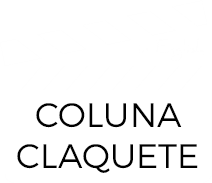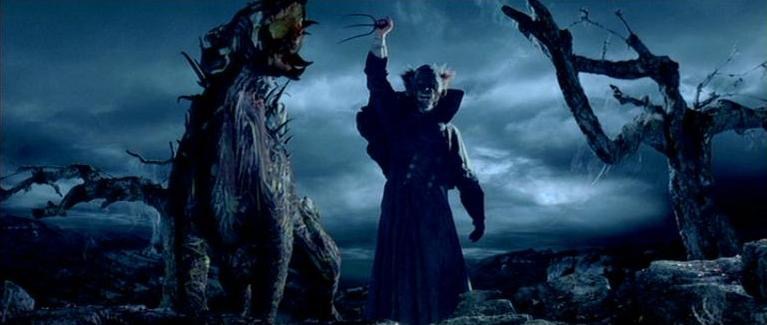Recommended movie: “Brotherhood of the Wolf”
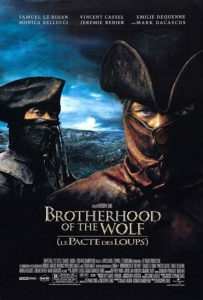 Why would anyone put together kung-fu fighter indians, conspirator gentlemen, and serial killer environments to tell the mysterious story of a monster that plagued France in the eighteenth century? If it were for making a historical account would be impossible, but cinema dispenses academic rigor, and may use the poetic license that the authors find necessary to make the report interesting.
Why would anyone put together kung-fu fighter indians, conspirator gentlemen, and serial killer environments to tell the mysterious story of a monster that plagued France in the eighteenth century? If it were for making a historical account would be impossible, but cinema dispenses academic rigor, and may use the poetic license that the authors find necessary to make the report interesting.
This is how director Christophe Gans created “Brotherhood of the Wolf” (“Le pacte des loups”, FRA, 2001), a film with lots of action and adventure, a beautiful cast, fantastic locations and an intriguing story about a real mystery which until today has not been fully clarified.
In France in 1764, when royalty was still firm and strong, the news of a murderous Beast, who killed and maimed villagers, especially women and children, led King Louis XV to send a special emissary, the Knight Grégoire de Fronsac (Samuel Le Bihan). This nobleman, accompanied by the mysterious Mani (Mark Dacascos), a Mohawk Indian, arrived in Gévaudan, a village in the southern interior of the country where the attacks were taking place.
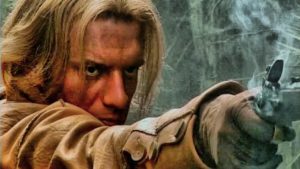 Fronsac was a man of many qualifications: gardener, naturalist, healer, taxidermist and intellectual, among other useful things for 18th century France. His mission was to capture the mysterious beast, which for some was a wolf, for others a monster, and to many the devil himself. Whatever it was, the Beast seemed to be able to escape, without even being identified by the few survivors.
Fronsac was a man of many qualifications: gardener, naturalist, healer, taxidermist and intellectual, among other useful things for 18th century France. His mission was to capture the mysterious beast, which for some was a wolf, for others a monster, and to many the devil himself. Whatever it was, the Beast seemed to be able to escape, without even being identified by the few survivors.
While hunting the mysterious animal, the Knight knows notable local characters, such as the resentful Jean-François (Vincent Cassel), who had lost an arm in Africa, his beautiful sister, Marianne (Emilie Dequenne), and sensual prostitute Sylvia (Mônica Bellucci). Gradually he discovers that there is a big network of intrigues extending from papal Rome to the court of France, with epicenter in the little Gévaudan.
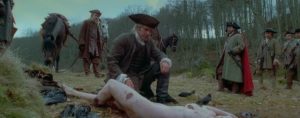 Little is known to this day about the Beast of Gévaudan, even in the rest of France. But the monster really existed, and made more than one hundred victims between 1764 and 1767, in the rural regions of Auvergne and Dorgogne. All of this is documented in the official town hall books of these places, with accounts of surviving witnesses – all of whom are proper, such as priests, judges, and deputies.
Little is known to this day about the Beast of Gévaudan, even in the rest of France. But the monster really existed, and made more than one hundred victims between 1764 and 1767, in the rural regions of Auvergne and Dorgogne. All of this is documented in the official town hall books of these places, with accounts of surviving witnesses – all of whom are proper, such as priests, judges, and deputies.
When the terror intensified, the local authorities asked the Court for help, and King Louis XV became personally interested in the case, sending men from his army and offering rich rewards to anyone who captured it. The most varied methods of capture were used, with experienced hunters, traps, poisoned baits, but without practical results.
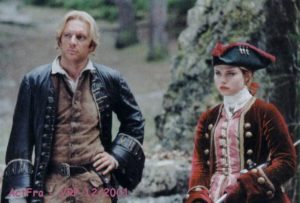 On four occasions, different large animals – wolves and hyenas – were killed, but soon new victims appeared. The last attack observed was in June of 1767, and then nothing more occurred, without coherent explanation. To this day, more than two hundred years later, there is no definitive explanation as to what the Beast of Gévaudan really was.
On four occasions, different large animals – wolves and hyenas – were killed, but soon new victims appeared. The last attack observed was in June of 1767, and then nothing more occurred, without coherent explanation. To this day, more than two hundred years later, there is no definitive explanation as to what the Beast of Gévaudan really was.
If there is no proven explanation, there is only speculation left, and why not do it in style, as director Christophe Gans dared? With a script by Stéphane Cabel, Gans presented his version of the facts, with lots of action and adventure, joining the videogame style with a tightly tiled plot, showing some of the powerful intrigue and interests game that was common at the time portrayed. Se nom è vero, è ben raccontato, as the Italians say …
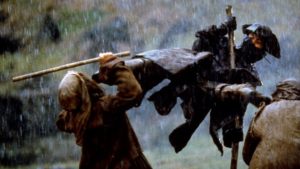 The director does not hide his affinity for manga, or Japanese comics, which have already earned him an earlier film, much worshiped by fans: “Crying Freeman” (FRA, 1995), starring the same Mark Dacascos. The spectacular sequences of action alternate with the tense relationships of the characters, in a well-made re-creation of scenarios and costumes.
The director does not hide his affinity for manga, or Japanese comics, which have already earned him an earlier film, much worshiped by fans: “Crying Freeman” (FRA, 1995), starring the same Mark Dacascos. The spectacular sequences of action alternate with the tense relationships of the characters, in a well-made re-creation of scenarios and costumes.
But historical realism looks better on documentaries, not fiction movies. The fight sequences in “Brotherhood of the Wolf” are also anthological, in the best Hong Kong style. The presentation of the main characters is surreal, with Mani distributing biffss under a torrential rain, in one of the most beautiful martial choreographies of the cinema.
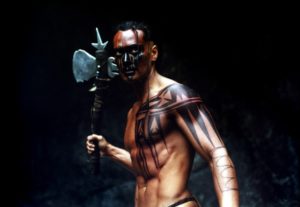 The director uses a lot of effects, such as changing the speed of the image during the action scenes, and in the montage shows the melee fights in three planes (general, blow, reaction), at a speed such that almost all they see the shadows in motion. The fact of having used digital cameras facilitated the insertion of the special effects.
The director uses a lot of effects, such as changing the speed of the image during the action scenes, and in the montage shows the melee fights in three planes (general, blow, reaction), at a speed such that almost all they see the shadows in motion. The fact of having used digital cameras facilitated the insertion of the special effects.
The enthusiasm with which “Brotherhood of the Wolf” was received in France disserved it in the foreign market, which was expecting a “serious” epic movie. But, as an entertainment product suited to the current audience, the movie succeeds in being more than a monster-hunt-with-martial-arts.
With its two-and-a-half- hour duration, the film shows an unusual historical event, interspersed with a cover and sword adventure, against the background of the embryo of the future French Revolution. With a dynamic language, the film captures the attention and surprises to the end, amidst the plot twists.
 The cast is one of the film’s strengths. The mysterious black belt Indian is lived by Mark Dacascos, who was actually European kung-fu champion in the early 80’s. He left the competitions to make movies like “American Samurai”, “Double Dragon” and “The Island of Doctor Moreau”, besides the already mentioned “Crying Freeman”. In television, he assumed the title role of the series “The Crow”, originated from a film starring the son of Bruce Lee, Brandon.
The cast is one of the film’s strengths. The mysterious black belt Indian is lived by Mark Dacascos, who was actually European kung-fu champion in the early 80’s. He left the competitions to make movies like “American Samurai”, “Double Dragon” and “The Island of Doctor Moreau”, besides the already mentioned “Crying Freeman”. In television, he assumed the title role of the series “The Crow”, originated from a film starring the son of Bruce Lee, Brandon.
The courtesan Sylvia is lived by beautiful Monica Bellucci, who became famous for starring “Malena”, italian movie nominated for an Oscar for Best Foreign Film in 2001. Monica, who was one of the vampires of Coppola’s “Dracula”, acted in both sequences of “Matrix”. Her husband at that time, Vincent Cassel, makes another important character in “Brotherhood of the Wolf”, the misfit Jean-François de Morangias.
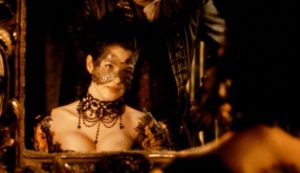 The negative point of the film was in the phase of home video, where the distributor opted for a lower standard edition than the production certainly deserved. The DVD of Europa Filmes was limited to a full screen edition and few extras. To the joy of the fans, the Blu-Ray was launched with widescreen anamorphic screen format. As extras, Trailer, Teaser and TV Spot, Interviews, Making Of, Backstage, The Monster, Cast Notes and Director.
The negative point of the film was in the phase of home video, where the distributor opted for a lower standard edition than the production certainly deserved. The DVD of Europa Filmes was limited to a full screen edition and few extras. To the joy of the fans, the Blu-Ray was launched with widescreen anamorphic screen format. As extras, Trailer, Teaser and TV Spot, Interviews, Making Of, Backstage, The Monster, Cast Notes and Director.
The Making Of is subtitled in Portuguese, is nine minutes long, and gives a good overview of the film. Backstage and Interviews are excerpts from the Making Of, without adding anything new. In the American edition of Universal, besides the film coming in Widescreen anamorphic, also comes the deleted scenes, trailers and production notes.
Despite the shortcomings of the DVD edition, “Brotherhood of the Wolvf” is guaranteed fun for action movie lovers, as well as giving another glimpse of what was the turbulent Europe of pre-Revolutionary France. Watch and draw your own conclusions.
